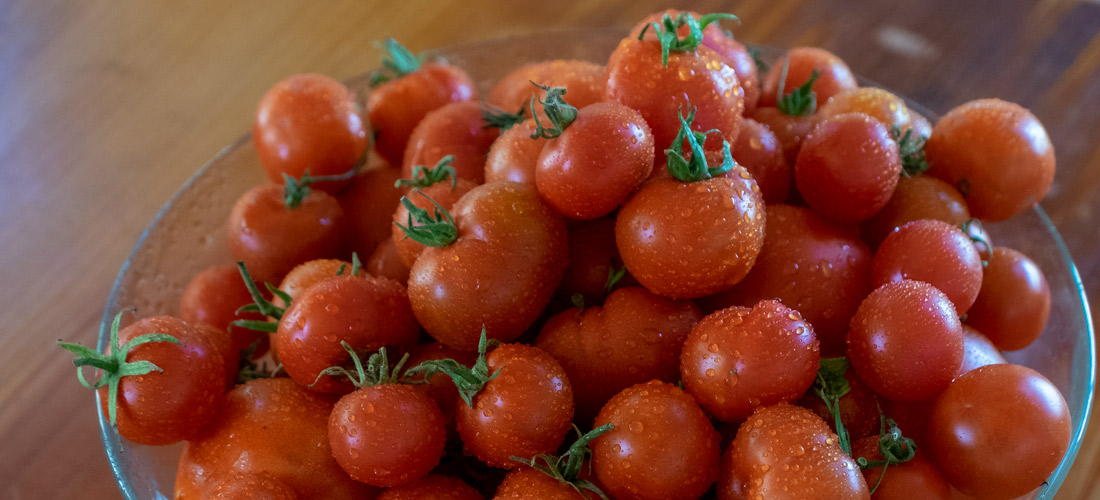Tomato Chutney
- Pickles, Chutney, Relish & Sauces
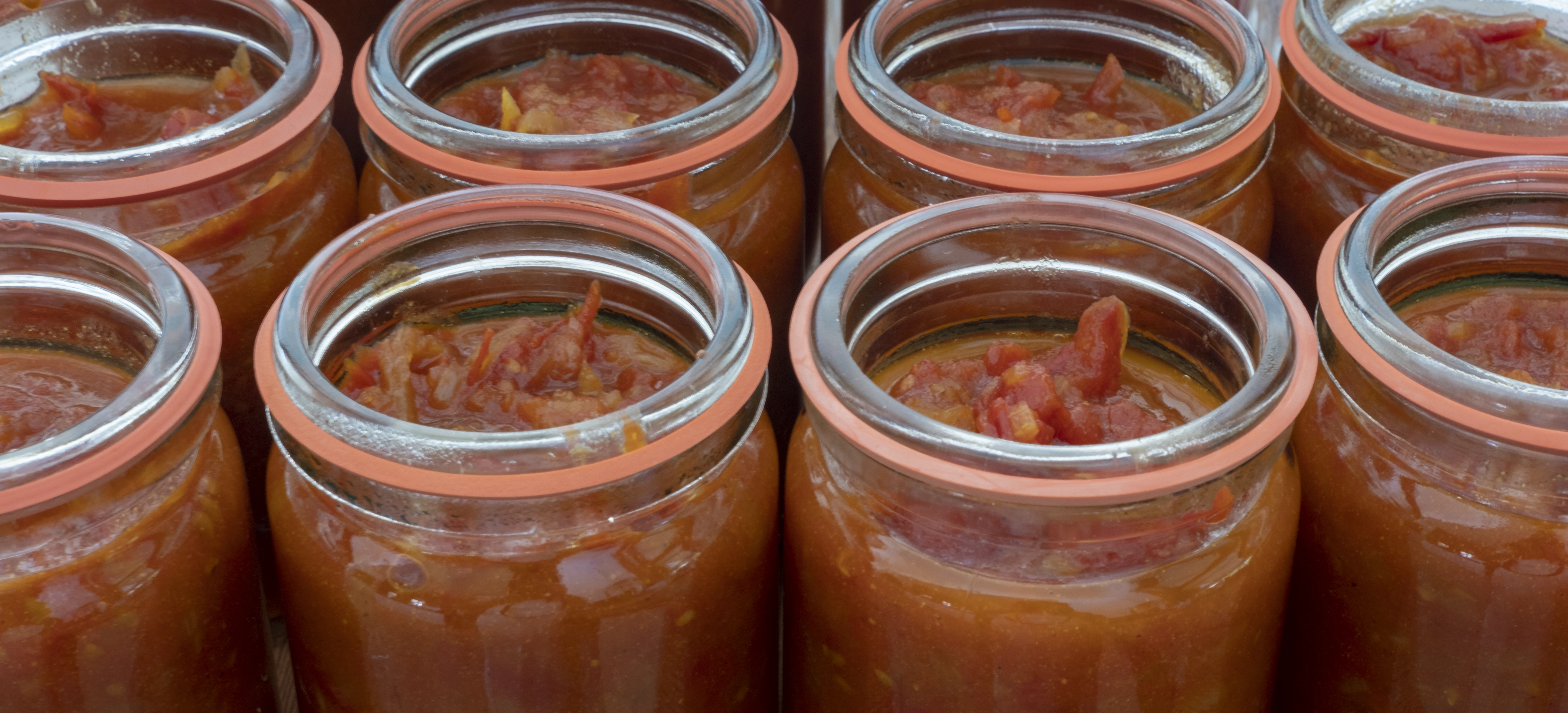
Preserve the abundant tomato harvest with this classic tomato chutney. Its long slow simmering produces an intense tomato flavour that epitomizes summer, and the mustard and curry powders contribute to its unique flavour. Special thanks to my mother-in-law for sharing her prized family recipe. Thick and chunky, its versatility is outstanding. It enlivens and enhances hot and cold meats, is indispensable at BBQ’s and can transform the humble sandwich. Enjoy each loving and addictive spoonful.
- Preparation Time:
- 45 minutes + 2 hrs marinating
- Cooking Time:
- 1.5 hrs
- Quantity:
- 8 x 325 ml jars
PREPARATION
Sterilise sealable glass jars and lids.
Prepare tomatoes as outlined in the Method section.
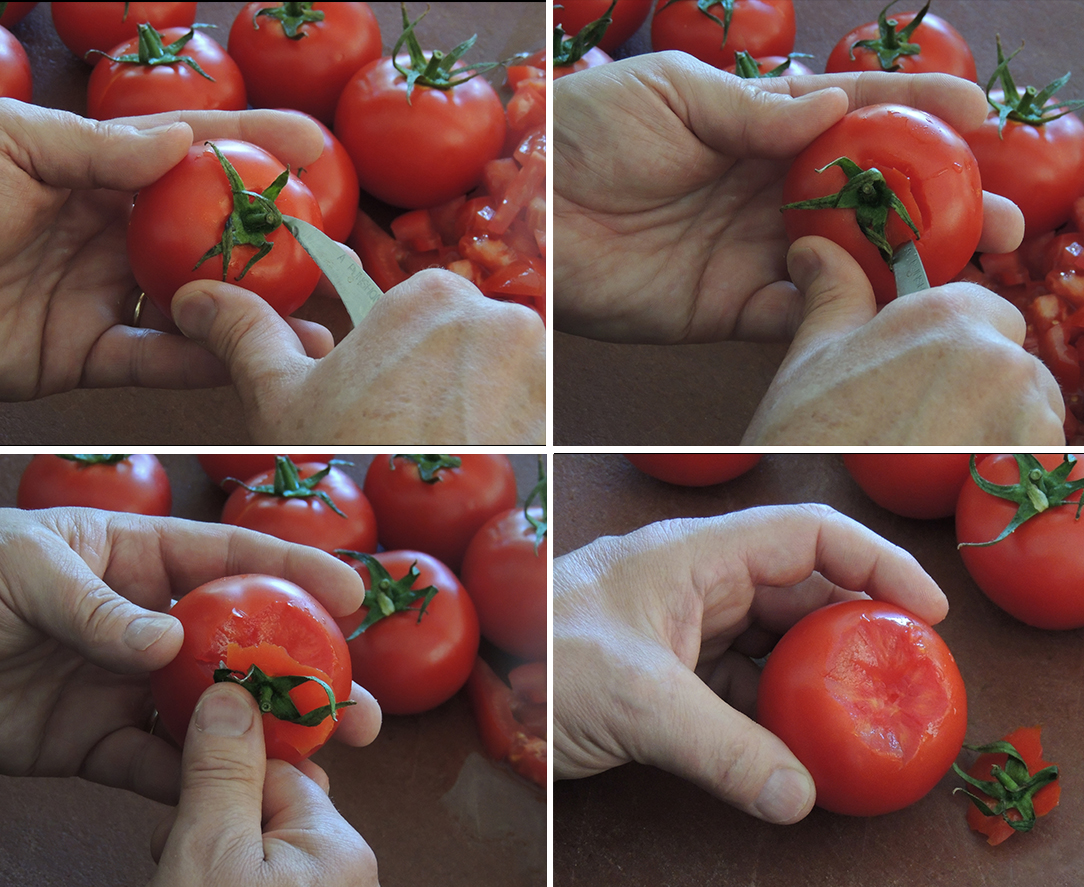
INGREDIENTS
- 4 kg
- Tomatoes, ripe, red
- 1 kg
- Brown onions
- 1.2 litres
- Vinegar, apple cider or white wine
- 680g
- Sugar, white
- 70g
- Cooking salt
- 25g
- Mustard powder
- 20g
- Curry powder
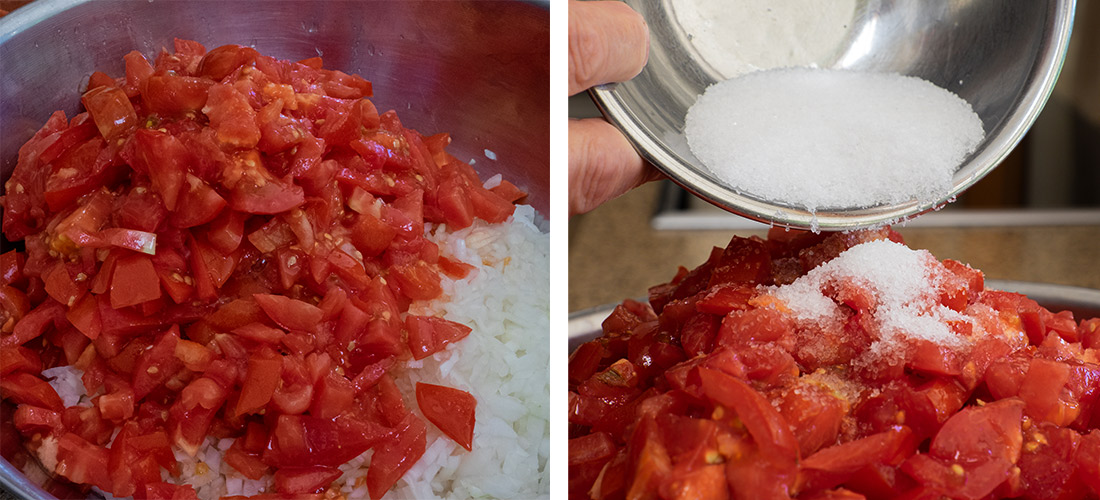
METHOD
Wash and gently dry the tomatoes. Remove the stem by inserting a small sharp vegetable knife a short distance from the stem. Using a slight inward angle, cut in a circular motion all the way around the stem. Repeat the process until the stem has been removed from all the tomatoes.
To remove the skin, place several tomatoes at a time in a pot of continuously boiling water for approximately 30 seconds. Remove and place in a bowl of cold water. This will soften the skin for the next step. Be careful to not overcook the tomatoes at this point.
Peel the skin off by starting at the top of the tomato where the stem was removed. The skin should slip off easily. Discard the skin. If a tomato is difficult to peel, place back in the boiling water for a few more moments. If the tomatoes are under ripe, they will be difficult to peel even after their hot water bath. Removing the skin can be omitted. Refer to Notes section for further information regarding producing a show quality chutney.
To prepare the onions, remove the skins and chop coarsely. Coarsely chop the tomatoes, and place in a large stainless-steel bowl with the chopped onions. Sprinkle with salt, cover with a clean tea towel and leave for 2 hours. Then drain the mixture and discard the salty liquid.
Place in a large preserving pot and add the vinegar. Bring to boil, and then turn down to simmer.
In the meantime, measure out and combine the sugar, mustard and curry powder.
When the tomato mixture starts to simmer, add the sugar mixture, and stir until it has dissolved. Simmer gently uncovered, stirring frequently, to prevent it from burning on the bottom of the pan, for approximately 45-60 minutes or until it has reached a thick chutney consistency. To test, spoon a little of the mixture on to a plate, it should hold its shape. Do not place a lid on the pan while cooking the chutney. Cooking it uncovered allows evaporation which helps to thicken the chutney.
Use a funnel to pour into dry sterilised screw cap sealable bottles, fill to approximately 2.5cm (1 inch) from the top of the bottle and seal while hot. Label, and store in a cool dark place in the kitchen or pantry.
Allow to mature for at least 2 weeks before eating.
NOTES
- Choose ripe clean fruit. Do not use overripe and never use mouldy fruit as this will produce a poor-quality chutney.
- Even though I cook up about 10-12 kg of tomatoes every summer just to make tomato chutney, a batch size that uses 4 kg tomatoes is about the perfect size. Any larger and you will have to use commercial strainers and pots, and it will take a lot longer to bring to boil and then simmer to get the right consistency.
- To produce a competition quality chutney, remove the tomato skin prior to chopping and marinating them in salt. As the skin does not break down during the cooking process, it will remain distributed throughout the chutney, after the flesh has cooked down into the jammy consistency.
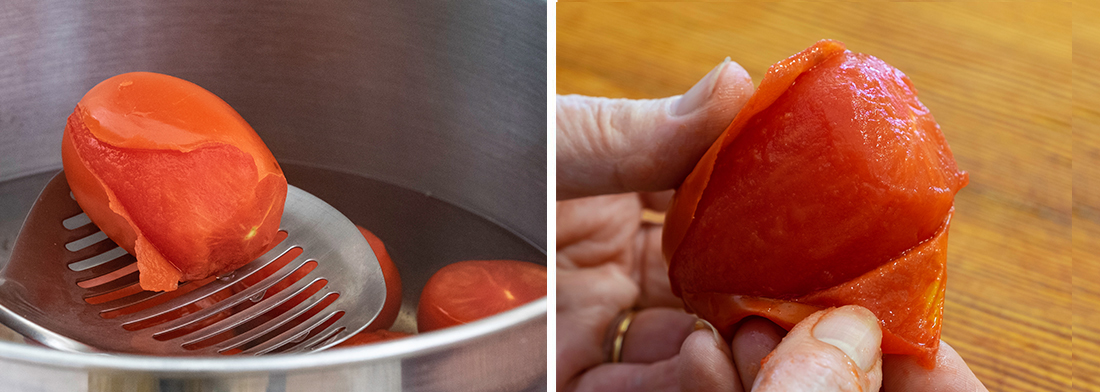
- The 2-hour marinating time can be extended. If it is left to marinate overnight, it should be refrigerated. Salting the tomatoes and onions draws out excess water. This is drained off and discarded. Removing the excess water considerably reduces the cooking time required to achieve a naturally thickened consistency.
- Use a good quality sea salt, unrefined, where possible, when preserving. It’s worth hunting around for. Table salt, which is cheap and readily available in supermarkets contains stabilisers and anti-caking agents and often iodine which forms a whitish haze and sediments in pickled vegetable recipes. These additives, and in particular iodine, can affect the appearance and taste of pickles during the maturation and storage period. The ingestion of a cocktail of anti-caking chemicals such as calcium silicate, sodium silicoaluminate, tricalcium phosphate, magnesium carbonate, silicon dioxide and yellow prussiate of soda, is also unnecessary. Lite Salt may be used in quick pickle recipes; however, it may result in a slightly different taste than expected. Read the label before buying and look for salt that is free from any artificial additives. My favourite salt is Olsson’s cooking salt
- The type and colour of the sugar and vinegar used will affect the final colour and flavour of the chutney. Malt vinegar and brown sugar will produce very dark brownish red chutney with a more earthy/molasses background flavour, while white wine or apple cider vineger and white sugar will produce chutney that has a fresher and brighter tomato flavour. The latter is a matter of personal choice.
- Good quality jars should be used in all preserving, particularly when they are processed in a hot water bath. Thin jars often cannot withstand the temperatures and may crack either in the bath or on and or after removal. Avoid the disappointment and invest in some good jars from a homewares or preserves outlet. Select jars that have non-reactive lids as the vinegar solution can cause the lids to rust over time.
- The cooking time is an approximation only. Cooking time will depend upon,(1) the size of preserving pan-the broader the pan and quicker the evaporation,(2) degree of fruit ripeness – the riper the fruit, the sweeter and juicer the initial chutney will be and the (3) degree of heat when cooking – the higher the heat, the greater the boil which will produce greater evaporation.
- Sometimes preserves can produce a scum while they are simmering. Impurities from the fruit and sugar will rise to the surface and a fine frothy foam will move towards the edge of the preserving pan. Some fruits will produce more scum than others.
- This is a natural self-clarification process and makes the task of making a high-quality preserve easier. Removing the scum increases the preserve’s clarity. This is very important if it is being submitted for competition. Remove the scum before bottling. Using a stainless-steel spoon, skim the scum from around the edge of the preserving pan. Be careful to remove just the scum and not the preserve. This can be done while the preserve is boiling and/or once it has been taken off the heat. Do not attempt to remove the scum from the centre of a boiling pan, as there is a high risk it will splutter and hot preserve burns.
- Always store chutney in a cool dark place. A warm area can cause it to ferment, and bright sunlight can affect the colour.
- Chutneys are best left to mature for 4 weeks in a cool dark place before eating. Often, it’s too tempting to break open a new batch but do try to let it mature for at least 2 weeks. This will allow the flavours to marry and the tartness of the vinegar to settle. Traditionally they were stored in the cellar or pantry
- To increase the unopened chutney’s shelf life, use either the Preserving Unit Method or the Stock Pot Method. The principles are the same. The difference is a preserving unit will have an internal removable rack for bottles to sit on and a tap to easily draw off the water. Some units may have an in-built thermometer.
- Preserving Unit Method
- Place sealed bottles/jars in Fowlers Preserving Unit or equivalent.
- Cover with water, bring to the boil and hold at gentle boil for 30 minutes.
- Turn off, remove lid, and allow to stand for 5 minutes before removing.
- Using the tap draw off some of the hot water so the level is sufficiently below the bottles to be able to safely remove them without scalding yourself.
- Remove from hot water bath and place on a board to cool.
- Stock Pot Method
- Line large stock pot with some sheets of newspaper or a cut-down cake rack. Place the bottles on the newspaper or rack, in the pot, allowing space between each bottle so they do not touch. This lining will protect the bottles from direct heat and prevent cracking.
- Cover the preserves with water which is the same temperature as the preserves. Bring to the boil and hold at gentle boil for 30 minutes.
- Turn off, remove lid, and allow to stand for 5 minutes before removing.
- If possible, remove some of the hot water so the level is sufficiently below the bottles to be able to safely remove them without scalding yourself.
- Remove from hot water bath and place on a board to cool.
